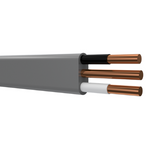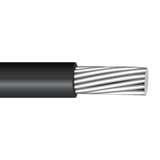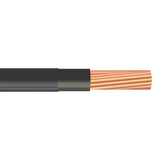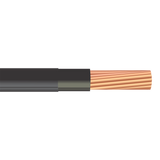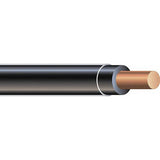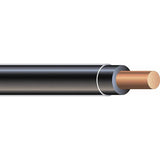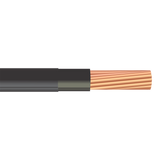Burying Cables Underground and In Conduit: Three Burning Questions

Whether in a DIY project or a professional application, direct burial is one of the most common processes when it comes to the electrical project. Yet, there are many misconceptions and mistakes when it comes to burying cables underground. Most of them are related to the mistaken notions about the ways of burying THHN/ THWN electrical wires. Here is the compilation of the three most common questions our customers ask on our 24/7 chat regarding burying electrical cables.
Does a direct burial cable need a conduit?
No, direct burial cables do not need conduit for cable. The term ''direct burial'' means that the cable can be installed directly into the ground without the conduit. These cables have the construction that guarantees perfect soil and water resistance to operate under the ground for years as long as they are correctly installed. The wires buried in the conduit are not suitable for direct burial because of their construction, so the conduit helps to use them for underground purposes.
Theoretically, you can, of course, install a direct burial cable in a conduit, but you have first to ask yourself why. The clear benefit of doing so is that the conduct can help to withstand the challenging environmental conditions better. It also offers an easier way to locate the cable if it is in need of service, even though a competent installation is enough to find the cable most of the time. If you deal with an incredibly challenging electrical project, installing the conduit cable may help it run more efficiently.
All of these possible benefits genuinely depend on the particular requirements related to your electrical project, such as the state of the soil, etc. Installing the wire in the duct might also be needed because of the local regulations that may sometimes differ from the standard requirements imposed by the National Electrical Code.
In short, a conduit makes sense if the cable needs extra protection. However, in most cases, the additional protection of the conduit is not required, and a direct burial cable performs amazingly by itself. It would be best to be mindful that installing a conduit will make your electrical project more expensive and more challenging to handle in installation and the work required.
All in all, you do not need direct burial cables with the conduit in most cases. Still, if you think that you do, it is best to analyze all aspects of your electrical project, including the state of the soil, the overall cost, and other possible concerns. You may also want to approach a professional electrician to establish a clear plan suitable for your particular circumstances.
Can I directly bury a THHN wire?
The short answer is no.
THHN and THWN-2 Copper Building Wire is only approved to be buried in conduct, as it lacks the characteristics that would make it eligible for direct burial. UF-B and USE-2 are the standard direct burial cables. The confusing idea that THHN or THWN-2 can be directly buried stems from the fact that UF-B wires from some producers are sometimes double-listed as THHN or THWN-2. If you are thinking of a wire similar to THHN/THWN-2 for direct burial, the obvious suggestion is UF-B.
Please note that the cable you bury in conduit should have a THWN-2 rating and not just THHN because it is supposed to be waterproof. The cable with only a THHN rating will not last long in the conduit underground because of the degrading soil impact. Therefore, always check the label and make sure that the cable is double-listed as THHN/THWN-2.
The type of conduit you also use matters, as you cannot simply go for a thin one, it will be damaged in no time. It is best to use a rigid metal conduit. If you go for a non-metallic conduit, you may consider encasing it in at least three inches of concrete. Whatever you do, never use EMT conduit as it will not survive the conditions of direct burial. If you are not sure about a specific type of conduit, always check applicable regulations, including your local ones. I hope this helps.
Can a THHN/THWN wire be placed in a buried conduit?
When it comes to THWN- yes, indeed, it can be placed in conduit, and there are no issues with it at all. One thing that should be considered is that you need to use an appropriate type of conduit and adhere to all the rules of burying the wires in conduit, especially when it comes to the distance at which you place the conduit underground.
The material from which the conduit is made is also a concern. Metal conduits could be helpful and area common choice for burying THWN.
Do note that you should never use a conduit that is too thin, such as EMT, even though it might be rated for direct burial. This is the case when the rating does not truly reflect the circumstances.
THHN is a whole different issue than THWN in this situation. It is better not to place it in conduit or bury it in the ground in any way, as it is not resistant to water, and contact with water is almost inevitable when you plant the cable in the ground.
The sizing of THWN wire buried in the conduit does not really matter; you can bury 12 AWG or any other size as long as you can find an appropriate conduit. In addition to NEC, it is good to familiarize yourself with local regulations, as they may vary. It might be a good idea to upgrade to a direct burial cable like UF-B for mission-critical applications.
Nassau National Cable sells THHN, THWN and cables meant for direct burial and conduit from the top sellers at competitive pricing. If you need further advice on conduit vs. direct burial, you can contact support representatives in our 24/7 chat.


